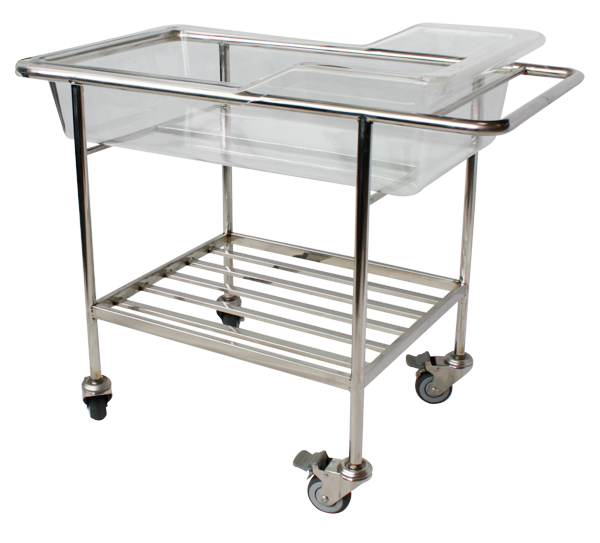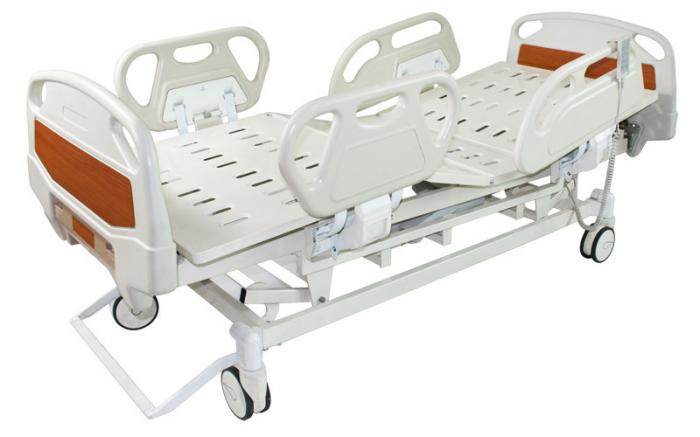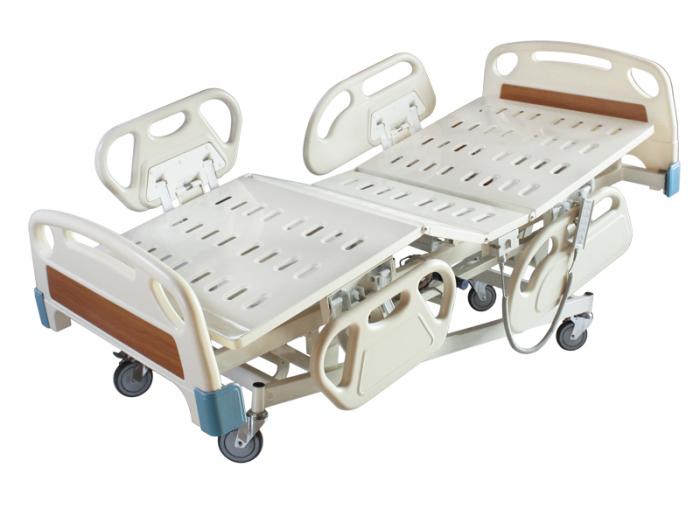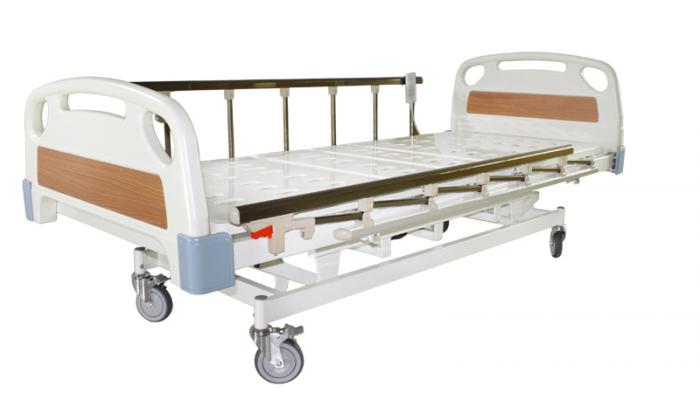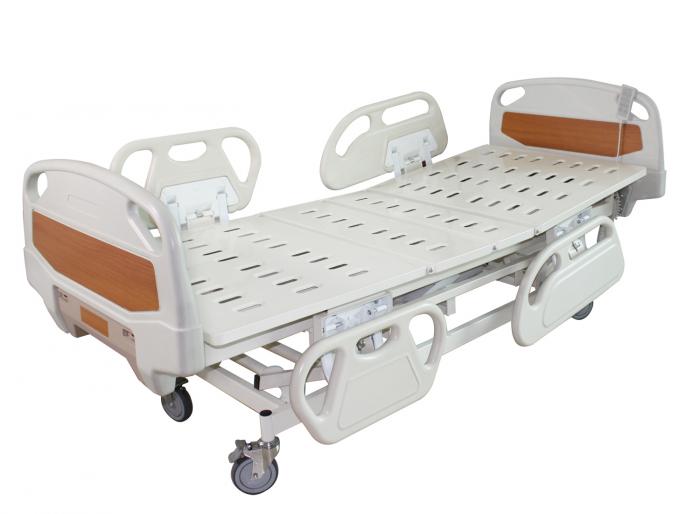| Name: | Pediatric Trolley |
|---|---|
| Model No.: | BES-HB065 |
| Material: | stainles steel |
| Product Name: | Pediatric Trolley |
| Brand: | BESCO |
| LEAD TIME: | 20 days |
| Sample: | Available |
| MOQ: | 50 UNITS |
| Payment Term: | T/T in advance |
| Keywords: | Pediatric Trolley,Baby Trolley,Baby Bed |
| Country of Original: | China |
| Stock: | Available |
| Factory Address: | Changyuan,China |
| Office: | Zhengzhou,China |
Products Description
Stainless Steel Pediatric Trolley with Plastic Tray
Material:
Stainless steel,plastic baby tray
Standard accessory:
3" castors
| Dimension | L780*W450*H850mm |
| Material | Stainless steel |
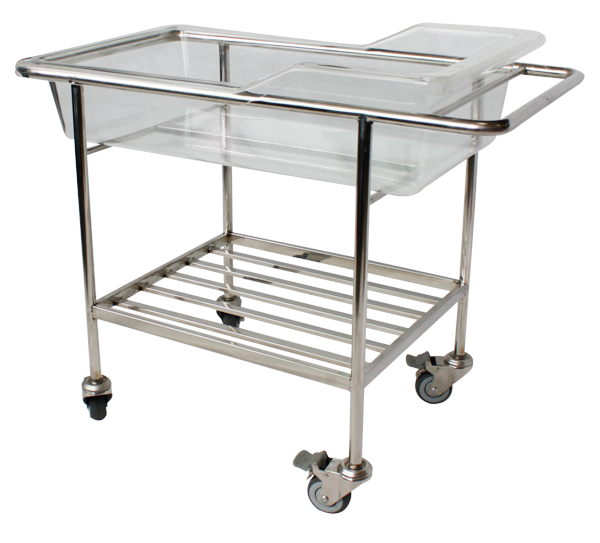
A baby trolley, or Pediatric Trolley and stroller, is a wheeled cart used to transport babies and young children, allowing parents to move them around safely and conveniently, especially before they can walk. They come in various types, such as travel strollers for portability, jogging strollers for exercise, and double strollers for multiple children. Many strollers are designed for newborns with full recline or bassinet attachments and can attach to a car seat, forming a travel system for seamless transitions.
What a Baby Trolley (Stroller) Does
Provides mobility:
It allows caregivers to move a baby or toddler outside the home before they can walk or when they are too young to walk long distances.
Ensures safety:
A stroller keeps the child secure and in view while moving around, whether on a walk or navigating crowded areas.
Offers comfort:
Strollers provide a safe space for the baby to lie down, sit, or rest, often with features like recline, sun canopies, and comfortable seating.
Acts as a travel system:
Many strollers integrate with infant car seats, creating a travel system that lets you move a sleeping baby from a car to the stroller without waking them.
Types of Baby Trolleystrolley
Prams:
.
Historically known as "perambulators," these are classic baby carriages with a wheeled crib-like body, ideal for newborns.
Lightweight/Travel Strollers:
.
Designed for easy folding and portability, these are compact and light, perfect for travel and easy storage in cars.
Jogging Strollers:
.
Built with rugged features and adjustable suspension, these are designed for active parents to use while running or walking on various terrains.
Travel Systems:
.
A combination of a car seat and a stroller chassis, allowing you to snap the car seat directly onto the stroller for easy movement.
Double Strollers:
.
Made for families with twins or two young children, these can have tandem (front and back) or side-by-side seating.
To use a pediatric trolley, access equipment using its color-coded drawers (often color-coded by patient size using the Broselow system), retrieve the appropriate size resuscitation tape (like the Broselow tape) to find the child's correct weight and height range, and use the corresponding color to find the right medication dosages and equipment sizes within the trolley's drawers. Additionally, familiarize yourself with the trolley's external equipment, such as the defibrillator, Ambu-bags, and oxygen, and ensure the cart is stocked and ready for pediatric emergencies.
Steps for Using a Pediatric Trolley
Access the Trolley:
Locate the trolley, which will have clearly labeled drawers, often with color-coded sections.
Use a breakaway lock if present to gain quick access without fumbling for a key.
Identify the Pediatric Resuscitation Tape:
Find the Broselow-style tape, which is a laminated, length-based color-coded tape.
Position the tape next to the patient, aligning the red end with the top of their head.
Determine the Patient's Color/Size:
Stretch the tape alongside the patient's body to measure their length.
The color at the patient's feet or a specific point on the tape will indicate their color.
Retrieve Supplies from the Trolley:
Use the color code on the tape to find the corresponding color-coded drawer or section in the trolley.
Inside the appropriate drawer, you will find equipment and medications that are the correct size and dosage for that specific weight and height.
Utilize External Equipment:
Use the equipment located on the outside of the trolley, such as the defibrillator, Ambu-bags (bag-valve masks), and oxygen, as needed.
Key Features of a Pediatric Trolley
Broselow System:
A color-coded system where drawers and equipment are organized by the patient's length, providing quick access to the right sizes for intubation tubes, IVs, and medication dosages.
Color-Coded Drawers:
Each drawer corresponds to a specific weight or length range of the child, containing specific types of equipment.
Breakaway Locks:
A security feature that allows for quick access to the cart's contents during a medical emergency.
Resuscitation Tape:
A length-based tape (like the Broselow tape) used to quickly determine a child's size and corresponding color code.
Specialized Equipment:
Includes smaller versions of adult equipment, such as infant-sized Ambu-bags, endotracheal tubes (ETTs), and IV catheters
